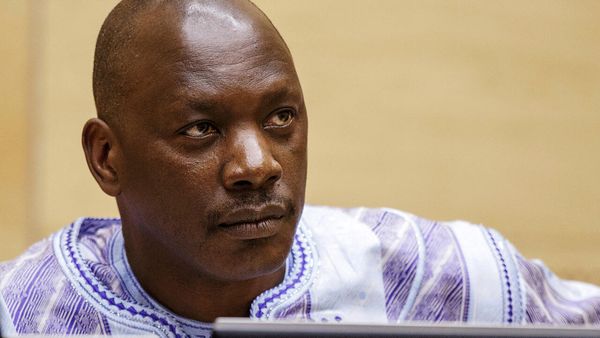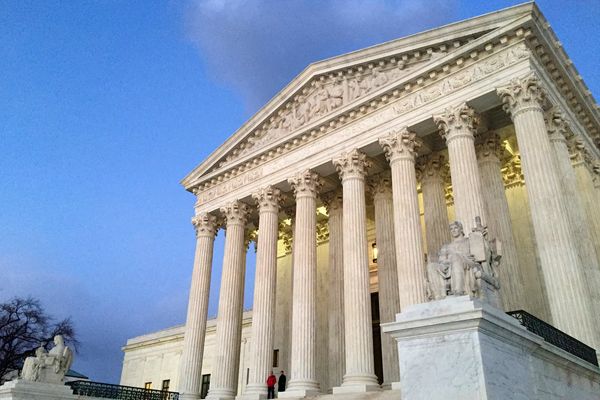
President Joe Biden is hoping to use his upcoming State of the Union address to nudge the pandemic into the nation’s rear-view mirror. But it could turn into yet another disruptive display of national tensions and frustration over trying to move past COVID-19.
Biden’s March 1 address to Congress will play out against what Vice President Kamala Harris has called a “malaise” over the persistence of COVID and growing public impatience to get back to normal after two full years of pandemic restrictions.
The setting — Capitol Hill — remains one of the most significantly disrupted workplaces in the country, something of a ground zero for culture wars over the lingering restrictions.
Proxy voting in the House allows lawmakers to skip going into the office and has been extended through March. Tours and office visits are limited. GOP lawmakers have racked up thousands of dollars in fines for violating mask-wearing mandates on the House floor.
Seating for Biden’s first address to a joint session of Congress last April was capped at about 200 — about 20% of usual capacity for a presidential presentation. White House officials say the protocols for Biden’s next one will be determined by House Speaker Nancy Pelosi.
Pelosi indicated last week that lawmakers are aiming for “fuller participation” than last year, including inviting every member of Congress. She said, “I think the people are ready to pivot in a way that shows to the American people we largely have been vaccinated here."
But attendance, she added, will be "up to the Capitol physician.”
Republicans, meanwhile, have grown increasingly vocal about rolling back restrictions at the Capitol. In the Senate, more than half of GOP lawmakers this week signed a resolution calling on Congress to lift all virus rules and reopen to visitors.
“From stores to venues and most workplaces and schools, the rest of the United States has reopened, and it’s time for the Senate to do the same,” said Sen. Bill Hagerty, author of the resolution.
Though the Capitol and other federal properties set their own rules, the District of Columbia's indoor mask requirement for most indoor gatherings and businesses is to be lifted on the same day as Biden's address, The White House, for its part, says it will set rules for the complex based on Centers for Disease Control and Prevention guidance.
There are no indications that Pelosi is prepared to lift the House chamber's mask guidance, which she maintained last year even when the CDC eased indoor mask-wearing requirements for fully vaccinated individuals before the emergence of the delta variant.
The White House has taken extraordinary precautions to keep Biden from getting the virus, including requiring high-quality masks in his vicinity and limiting his travel and participation in large events. A speech to a full House chamber would be by far the densest audience of his presidency to date.
The debate over rules on wearing masks and getting vaccinated has become a major front in the nation's culture wars, breaking down along regional and political lines. Scenes of mask-less celebrities enjoying the Super Bowl — when schoolchildren in some jurisdictions are required to wear masks even when outside at recess — have drawn criticism for unfairness.
Some Biden allies are fretting that the Capitol scene could add fuel to the fire, or that anti-mask conservative Republicans would use the speech for some stunt or protest.
More broadly, federal officials are racing to finalize new, more flexible national guidance on mask-wearing and other policies before Biden steps up to the rostrum in the House chamber at 9:01 p.m.
“We want to give people a break from things like mask-wearing, when these metrics are better, and then have the ability to reach for them again, should things worsen,” Dr. Rochelle Walensky, director of the CDC, said Wednesday.
She indicated the revised guidelines, to be coordinated with a broad administration plan for the “next phase” of the virus response, should come around the end of February.
Administration officials expect that new strategy and message to figure prominently in Biden’s speech as pandemic fatigue becomes more pronounced.
There is growing concern that the federal government’s cautious approach to easing is leaving it out of step with even Democratic-run state and local governments that are lifting restrictions as coronavirus cases, hospitalizations and deaths decline.
The White House sees Biden's speech — in concert with the expected loosening of virus limits — as an opportunity to help him stem an erosion of public confidence in his leadership. According to an AP-NORC Center for Public Affairs Research poll last month, just 45% of Americans said they approved of Biden’s handling of COVID-19, down from 57% in December and 66% in July.
There is growing clamor in both parties.
“It’s time to declare an end to this pandemic,” Democratic Rep. Ami Bera, a physician, wrote in an op-ed in The Sacramento Bee. “We need to get our lives back. And we can.”
Senate Minority Leader Mitch McConnell this week criticized the Democrats' approach, saying they only recently changed their tune because of shifting public opinion.
“The only science that’s changed in the last two weeks is the political science,” he said. “The only data that’s changed in the last two weeks is Democrats’ polling data.”







